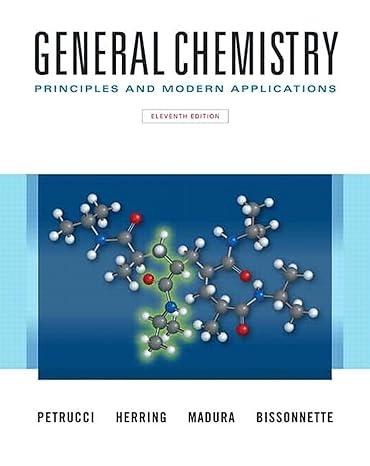(A) Two solutions, 100.0 mL of 1.00 M AgNO31aq2 and 100.0 mL of 1.00 M NaCl1aq2, both...
Question:
(A) Two solutions, 100.0 mL of 1.00 M AgNO31aq2 and 100.0 mL of 1.00 M NaCl1aq2, both initially at 22.4 °C, are added to a Styrofoam-cup calorimeter and allowed to react. The temperature rises to 30.2 °C. Determine qrxn per mole of AgCl1s2 in the reaction.
![]()
(B) Two solutions, 100.0 mL of 1.020 M HCl and 50.0 mL of 1.988 M NaOH, both initially at 24.52 °C, are mixed in a Styrofoam-cup calorimeter. What will be the final temperature of the mixture? Make the same assumptions, and use the heat of neutralization established in Example 7-4.
Example 7-4
In the neutralization of a strong acid with a strong base, the essential reaction is the combination of H+(aq) and OH-(aq) to form water.
![]()
Two solutions, 25.00 mL of 2.50 M HCl(aq) and 25.00 mL of 2.50 M NaOH(aq), both initially at 21.1 °C, are added to a Styrofoam-cup calorimeter and allowed to react. The temperature rises to 37.8 °C. Determine the heat of the neutralization reaction, expressed per mole of H2O formed. Is the reaction endothermic or exothermic?
Step by Step Answer:

General Chemistry Principles And Modern Applications
ISBN: 9780132931281
11th Edition
Authors: Ralph Petrucci, Jeffry Madura, F. Herring, Carey Bissonnette





